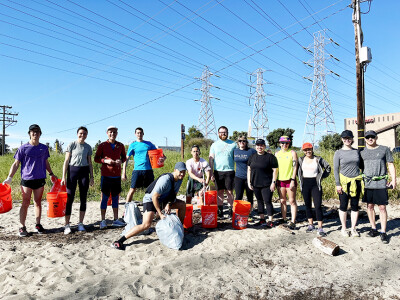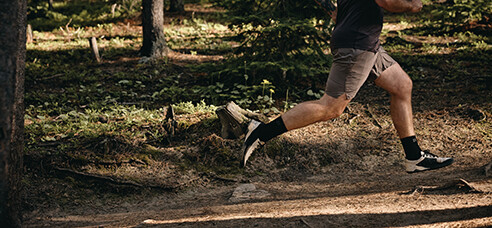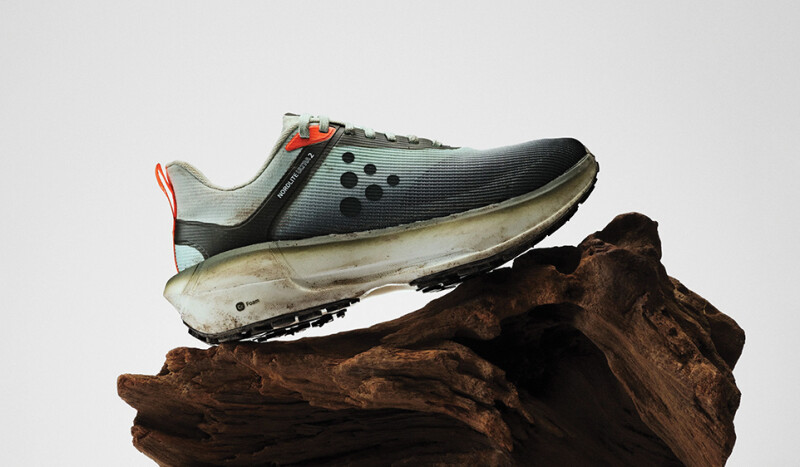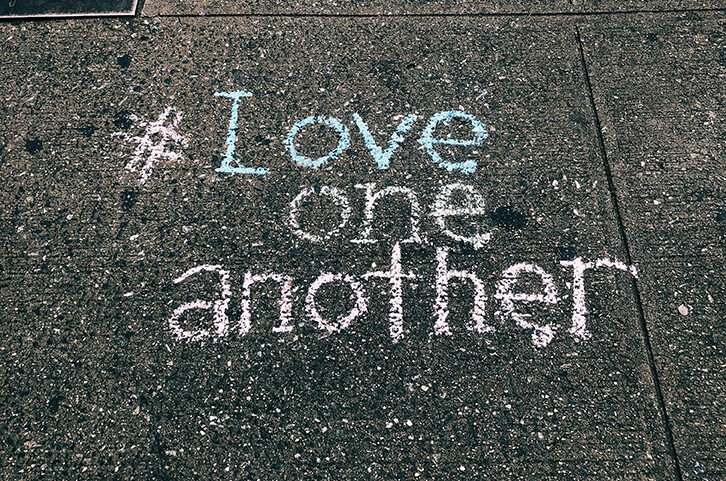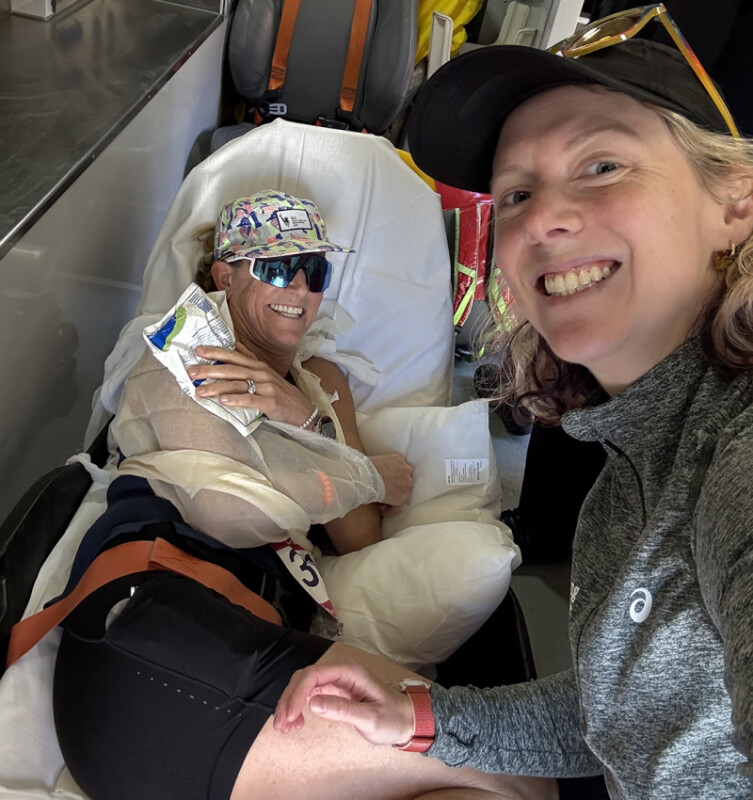Sustainability. Is there a buzzier buzzword in the running world these days? Not that that’s a bad thing, of course. As consumers have increasingly made a clean and healthy planet a focal point of their lives, the running industry has responded in kind.
Footwear makers are exploring new materials and manufacturing processes to get into lock step with their customers. Other suppliers are doing the same, as they try to limit their carbon footprint. Retailers, meanwhile, are learning that embracing the sustainability movement isn’t just good for the earth. It’s also good for business — especially, increasingly, the race business.
But sustainability is not some flash-in-the-pan trend that emerged out of nowhere. As Tia Bodington points out, the running world has been integrating sustainable practices for more than a decade. The CEO of Resource Efficiency Products, Bodington also serves as the race director for the Miwok 100K in California. Like many others in the industry, she learned a deep appreciation for nature as a child and now lives it out as an environmental steward.
“I grew up in a hiking family in Northern California and raised my kids in Berkeley,” says Bodington. “The sustainability mission was just second nature to me,” pointing out that when she took over the Miwok 100K in 2004, its fifth year, the volume of garbage was astonishing — an overflowing 10-yard dumpster for only 250 runners.
“By 2012, the availability of commercial recycling and composting bins had improved and we had reduced the trash to half of a four-yard bin, while doubling the size of the event,” she adds.
Since then, Bodington has continued to find ways to enhance the sustainability of the Miwok 100K.
“We recently added TerraCycle bins to the aid stations and finish area for runners’ nutrition wrappers,” she says, adding that they now ship all the wrappers off to TerraCycle post-race and they turn them into cool, useful things like planters and totes and even park benches. “The important thing is to identify a few manageable goals that you can sustain over time; educate your staff, customers and runners and develop a system that achieves those goals.”
Race organizers who ignore sustainability practices, Bodington warns, do so at their own risk.
“As more environmental education occurs in the outdoor sports space, participants are beginning to take into account the practices of the events they are considering,” she says. “Races that don’t evolve the sustainability aspect of their events can find themselves left behind as runners include event sustainability measures in their decision on which races to run.”
ARMed for Sustainability
Nick Kovaleski, director of operations for A Runner’s Mind (ARM), also based in California, shares a similar story to Bodington.
“From a young age I had an appreciation of the natural world around us,” he says. “My parents didn’t limit my exposure to the outdoors and when you grow up surrounded by nature, it would be impossible to not feel a deep sense of gratitude for nature and a desire to protect our environment.”
Today ARM is one of the Bay Area’s top run specialty stores, with two locations — one in San Francisco and the other in Burlingame, employing 25 team members in all, split between full-time and part-time.
From the get-go, Kovaleski knew that California’s climate goals were very much aligned with his.
“We live in a state that puts the environment first and also in an area with a high concentration of humans who understand the importance of environmental stewardship,” he says. “There are few cities in the country that have standards as high as the city of Palo Alto.”
Kovaleski welcomed Palo Alto’s exacting environmental regulations, noting that they significantly increased his learning curve.
“Partnering with the city to help them host their Great Race for Saving Water in 2019 raised my environmental awareness in race production,” he explains. “Palo Alto required the event to be zero-waste and we couldn’t send anything to the landfill. With guidelines like that, it’s hard not to shift your entire perspective to one that places the environment above all else.”
Around the Environment
For Brian Mister, co-founder and race director for the Around the Crown 10K in Charlotte, NC, introducing sustainability practices to his race wasn’t quite as seamless. He initially wondered if being “a blue city in a red state” could potentially hamper his efforts.
But as Mister points out, sustainability has played a big role in the growth of his race. In its fifth year, the Around the Crown has become one of the Tarheel State’s most popular races. Participation surpassed 6000 runners in 2023, up 23 percent from the previous year.
“Sustainability has been part of our mission since Day One,” says Mister. “Our runners have noticed and call us out for it. They like being part of something that has a positive impact on their community.”
Bodington echoes that sentiment. “Runners are increasingly offered opportunities to enhance the sustainability of their participation in races,” she says. “They can decline the ubiquitous race T-shirt, choose to recycle their gel packets and even offset their carbon for travel to races.” One example: Many trail races now require that runners bring their own cup for hydration during the event.
As Bodington notes, there are countless ways to make a race sustainable. But according to Kovaleski, the most difficult part for many race organizers is just getting started. He advice is to “put your money where your mouth is and do the right thing.”
“Do the work necessary to change the elements of your race or event that negatively impact the environment,” he says. “It’s hard, I know, and it requires you to say no more than you may be comfortable saying no. But it’s also liberating to realize that the show will still go on.”
Making the Effort
So how can hesitant race organizers get sustainability efforts off the ground? According to Kovaleski, the first step is to look inward. “Take the time to reflect on your own practices,” he says. “Do everything in your power to make sure you operate your business as responsibly as possible.”
From there, Kovaleski advises, it’s essential to make sure everyone on your team is on board.
“Share those efforts and empower others to believe that it’s a matter of just doing it,” he says. “Be intentional in everything you do. It’s important to build confidence around any new initiative. Have a conversation with everyone on your team. Before they can buy in, they must understand what the goals are.”
That goes for volunteers too, according to Mister. “Meet people where they are,” he says. “You’re going to need more volunteers and they’re going to need to know what they’re doing.”
Bodington learned this lesson firsthand. “One pitfall is assuming that a race’s staff and volunteers are supportive of the sustainability measures being proposed or have any interest in working toward lower waste at all,” she says. “Some people are unaware or don’t care. Assess your colleagues and figure out how to achieve buy-in before instituting green methods for managing race supplies, waste and transportation.”
Once you get your team up to speed, there’s still a bit of homework that needs to be done.
“Read your event permit and look up the local laws to find out whether recycling and composting are legally required in your jurisdiction,” Bodington says. “Work with your waste management vendor to rent the appropriate receptacles. Tape pictures of what goes in each bin directly on the bin.”
Mister emphasizes the need for clear and easy-to-read signage. “Messaging is crucial,” he says. “You can’t just put out bins for compost and recycling. You need to show people exactly where things go or you’ll end up with a big mess.”
Pre-Cycling Explored
One way to head off the accumulation of trash is “precycling.” Bodington says it has made a noticeable difference for her on race weekends.
“You can do it before the time crunch of race week,” she explains. “A few weeks out from the event, streamline all your supplies by removing all the unnecessary plastic wrap, bags, boxes within boxes, six-pack rings, foam peanuts, paper, cardboard and tags. Volunteers get very busy and tired during a race and items that could be recycled or composted often get thrown in the garbage for expedience. Your vols will really appreciate having a lot less junk to deal with.”
Drinking cups are perhaps the greatest source of trash at a race. That has been Mister’s experience. But he found a perfect answer to this problem by partnering with Hiccup Earth (www.hiccupearth.com), a company out of Florida that offers eight-ounce reusable silicon cups. Hiccup delivers their cups to the race site, picks them up when it’s done and then sanitizes them for the next race. Cup waste, in turn, is eliminated.
Food waste is another common challenge to sustainability efforts. But Bodington encourages race organizers to view this as an opportunity for community engagement.
“Identify ahead of time a local organization that could use your leftover food,” she says. “Ascertain what is perishable and needs refrigeration and what can be held in cartons while awaiting delivery. Assign one person who will ensure that the food doesn’t get thrown in the dumpster and then deliver the edibles the day after the race.”
The Trash Challenge
Like it or not, human waste must also be addressed. Bodington advises a bit of a financial investment. “Provide portable toilets at all aid stations, even the remote ones, to avoid a concentration of human waste in the wild at these locations,” she says.
Of course, despite organizers’ best efforts, trash will likely pile up. Bodington’s solution is to enlist sweeps that follow close behind the very last runners to clean up all markers, chalk and garbage along the course. “The community will appreciate that the event has left the area cleaner than when the race started,” she says.
Shirts have also become a major issue for event hosts. In fact, more and more race organizers are coming to the conclusion that they simply aren’t necessary. At the very least, a shirt can be an optional item that participants must request.
Kovaleski feels that’s how all giveaways should be handled. “Send folks home only with something they need or will use,” he says. “Learn to focus on the experience, rather than just the tangible freebies.”
The same goes for bibs, especially those that use Tyvek, a chemical that can do great harm to the environment. “There’s still not a good solution for it,” says Kovaleski. “You can replace bibs with popsicle sticks. At the very least, you can move to smaller bibs.”
He adds that safety pins are no longer a necessity for bibs. BibBoards is one of several companies that offer green alternatives.
Kovaleski is also a huge supporter of doing away with medals. “In my opinion, they are an entirely unnecessary element of the racing industry,” he says. “Eliminating medals entirely makes a huge difference on your event’s overall environmental impact.”
Taking Care of the Basics
Logistics and transportation are unique challenges for any race, and even more so when taking sustainability into account. Indeed, consider what Bodington needs to plan for in the Miwok 100K, which traverses 62 miles of rugged terrain, as opposed to Mister and the Around the Crown, which winds through city streets.
“In ultramarathons, the tradition of crews and pacers meeting their runners along the course balloons the carbon footprint,” Bodington explains. “But the celebration and support that moves along our course has become an integral part of many ultras. We’ve started using electric vehicles to deliver event supplies.”
For Mister, the Charlotte public transportation system – bus and rail lines – is an invaluable resource that participants are encouraged to use to travel to and from the race. Carpooling is an excellent alternative as well. “The important thing is to talk about it as much as possible,” he says. “That way participants know all their options.”
Essential to every practical step you take toward sustainability is establishing partnerships in the community. For example, Mister works locally with Sustain Charlotte, Crown Town Compost, Carolina Farm Trust and CGC Water. “We lean on our sponsors for about 60 percent of race revenues,” he says. “Corporate partners have gotten easier to attract because of our commitment to sustainability.”
One final piece of advice that Bodington, Kovaleski and Mister all agree on: Rome wasn’t built in a day — and neither will a race’s sustainability program.
“It’s a process,” says Bodington. “All events have some commonalities and many have some unique quirks, too. It will take time and there’s no perfect way to do it.”
Just take the first step, she adds. You’ll be glad you did — and so will your customers.
__________
Resources EVENT ORGANIZERS NEED TO Know
As the sustainability movement continues to gain strength in the running world, a host of national organizations have emerged, offering valuable support and resources for race directors.
• A great place to get a lay of the land is the Low Impact Alliance (LIA), a global collective of retailers, brands and runners dedicated to making the industry as whole more environmentally responsible. Joining LIA is easy. Just visit the website
(www.lowimpactalliance.com) and sign up. As a member, you’re asked to commit to supporting LIA’s efforts. In turn, you gain access to a wide variety of helpful educational opportunities, including webinars and special events.
• Another good resource is Runners for Public Lands (RPL). Like LIA, RPL is committed to protecting the environment through local initiatives. You can visit www.runnersforpubliclands.com to become a member and learn more. Through RPL you can also access the Race Director Hub, which was developed in partnership with the Council for Responsible Sport (CRS), a working group of race organizers and other nonprofit organizations. RPL also publishes “A Race Director Guide for Community Building and Environmental Stewardship.” You can access a copy when you visit the website.
• Council for Responsible Sport (CRS) – www.councilforresponsiblesport.com – is definitely worth exploring, too. Founded in 2007, CRS helps race directors and other event organizers measure and manage the environmental impact of their events. Certification from CRS is a powerful endorsement for any race.
• Then there is Leave No Trace – lnt.org – an organization that accomplishes its mission by providing innovative education, skills, research and science to help people care for the outdoors. By working with the public and those managing public lands, Leave No Trace focuses on educating people – instead of costly restoration programs or access restrictions – as the most effective and least resource-intensive solution to land protection.
